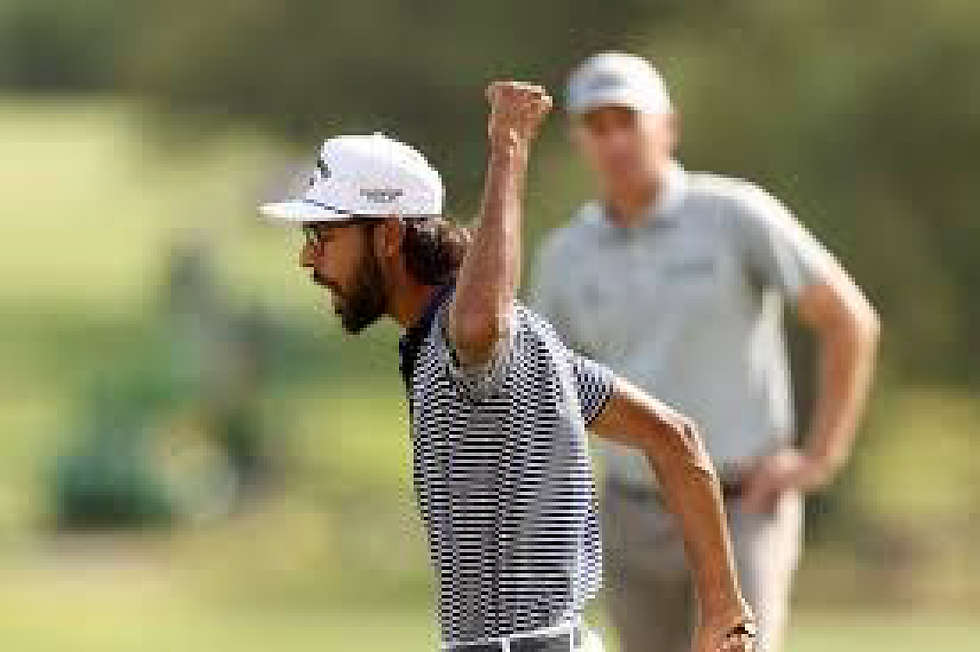Shoulder Dislocation.. In Golf?
- kushalappas
- Aug 26, 2024
- 3 min read
Updated: Sep 19, 2024

Akshay Bhatia won big and celebrated hard triggering an “uncomfortable” shoulder injury.
Akshay Bhatia swings into the top spot despite an “uncomfortable” shoulder injury
Akshay Bhatia made his debut on the PGA tour in 2023; since then, he has two tour wins under his belt and has made the cut in 58% of tournaments with nine top ten finishes which includes 2 runners-up.
Lauded for his smooth and effortless swing, it led him to play off victory in the Valero Texas Open against Denny McCarthy. This despite dislocating his shoulder while celebrating his 12-foot birdie putt which forced the playoff round.
Bhatia in his post-match interview spoke of how his shoulder slipped out when he went into an “uncomfortable position” and just like his swing, he effortlessly popped it back in. With some quick taping from his physiotherapist, he was able to soldier on through the playoff round and sink the victory. The issue with his left shoulder is not new to Akshay and he first encountered a problem with it during a game of Pickleball and then in 2022 during the Butterfield Bermuda Championship.

Bhatia’s celebration brings on shoulder injury...
Akshay had an anterior dislocation of his shoulder joint, that means his ball came out in front of his socket. As he noted, this happened when he went into an “uncomfortable position” while celebrating – this is normally a position of abduction and external rotation (arm is away from the body in a chicken wing position and the hand is cocking back like you’re throwing). During a shoulder dislocation, there is damage to the ligaments in the front of the shoulder (Bankart lesion) and there is a complementary fracture that occurs in the ball as it impacts the socket (Hill-Sachs lesion). These two lesions collectively make the shoulder joint unstable and leave you at risk of a future dislocation when you go into an “uncomfortable position”.
In Akshay’s case, the additional piece to the puzzle is his smooth swing which shows a large degree of flexibility within his joint. Also, his dislocation episodes are relatively innocuous events with no real trauma to his shoulder. So, there is a possibility that Akshay has a condition of generalised ligament laxity which allows his shoulder to slip in and out.

Shoulder injuries... a common phenomenon with Golfers ?
Golf is a demanding sport, which can result in injury, usually from overuse and sometimes from poor technique. The shoulder is a commonly affected site, with the lead shoulder particularly vulnerable to injury. The golf swing requires a synchronised effort of muscle strength, timing and coordination to generate high clubhead speeds often more than 160 kmph. Common shoulder problems affecting golfers include subacromial impingement, acromioclavicular arthrosis, rotator cuff tear, glenohumeral instability, and glenohumeral arthrosis. These conditions generally have a distribution based on age with younger golfers having instability, middle aged having impingement + rotator cuff injuries and elder golfers having arthrosis.
Research shows that shoulder related injuries rank 5th in golfers. Golf related instability is noted to happen posteriorly with the ball sliding out the back of the shoulder and results in pain/apprehension in the shoulder during the back swing. As such golf is a relatively safe sport when considering anterior instability and this might be a resultant issue of an injury from other aspects of life, i.e. pickleball in Akshay’s case.
What’s the next step ?
The first step would be a clinical examination of his shoulder to understand the direction of instability followed by imaging (MRI) to delineate his internal injury. As golf is a non-contact sport with relatively safe biomechanics, there is always an option of managing it conservatively with rehab and taping (as with Akshay) but the impact the shoulder has on other aspects of life generally lead down the path of surgical management.
Surgical management in a case of ligament damage is directed at fixing what was broken, and this is done through a minimally invasive process (arthroscopic surgery). This means a downtime of 3 months with a gradual return to training and finally competing at 9 months.


コメント